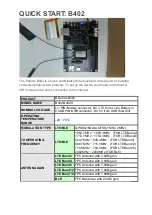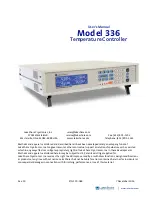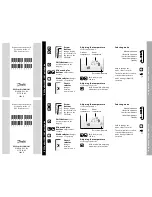
70
VAV-SVP01A-EN
Sequence of Operations
capacity increases, the air valve opens above its minimum position. At 100% required heating
capacity, the air valve opens to its maximum position.
All units have a modulating air valve. The modulating air valve is used to control how much air is
flowing through the diffusers and into the space. By modulating the volume of air flowing, the unit
heating capacity is modulated.
Units may also have local or remote reheat. This reheat may be hydronic or electric. Reheat is used
to maintain the space temperature at the heating setpoint.
Note:
Heating operation and Reheat are to different entities.
Air Valve Control in Space Temperature Control Operation
Air delivered to the space is controlled with a three-wire floating-point actuator that modulates the
air valve. The controller positions the modulating air valve to deliver the desired airflow (cooling
or heating capacity). The desired airflow is called the active-flow setpoint. The controller positions
the modulating air valve to deliver the desired airflow (cooling and heating capacity) to /
-2% of nominal airflow.
The airflow control algorithm compares the active airflow setpoint with the measured airflow and
calculates the necessary air valve movement to minimize error. The airflow setpoint is limited by
applicable minimum and maximum flow setpoints.
Reheat Control
There are two types of reheat control: hydronic heat and electric heat. Reheat is allowed to turn On
if the zone temperature is below the heating setpoint. Space temperature control can use reheat
if the following conditions are all true:
•
The unit is not calibrating;
•
Reheat is enabled (communicated auxiliary heat enable);
•
For local reheat only, the fan, if present, is not being overridden to Off (communicated fan speed
command);
•
The primary air temperature is less than the configured reheat enable setpoint (5°F [2.78°C]);
•
Local heat minimum airflow is used for both local and remote reheat.
Electric Heat
Pulse-Width Modulation of Electric Heat
One to three stages of pulse-width modulation of electric heat are available on single duct units and
fan powered units up to two stages are available for PWM heat control. Energizing for a portion of
a three-minute time period modulates the electric heater. This allows exact load matching for
energy efficient operation, and optimum zone temperature control. The heating minimum airflow
setpoint is enforced during reheat. The amount of reheat supplied is dependent on both the degree
that the space temperature is below the active heating setpoint and the time that the space
temperature has been below the active heating setpoint. If not already off, reheat de-energizes
when the zone temperature rises more than 0.5°F (0.28°C) above the heating setpoint.
The Stage 1 "on" time is proportional to the amount of reheat required. For example, when 50%
of stage 1 capacity is required, reheat is on for 90 seconds and off for 90 seconds. When 75% of
stage 1 capacity is required, reheat is on for 135 seconds and off for 45 seconds. When 100% of
stage 1 capacity is required, reheat is on continuously.
Stage 2 uses the same "on" time logic as stage 1 listed above, except stage 1 is always energized.
For example, when 75% of unit capacity is required, stage 1 is energized continuously, and stage
2 is on for 90 seconds and off for 90 seconds. When reheat is deenergized, the cooling minimum
airflow setpoint is activated.
Important:
Leaving air temperatures (LAT) should not exceed 100°-110°F, with 95°F being the
optimal for zone temperature and comfort control. At elevated LATs, room
Summary of Contents for VAV VV550 LonTalk
Page 1: ...May 2010 VAV SVP01A EN Installation Operation Programming VAV VV550 LonTalk Controller...
Page 17: ...VAV SVP01A EN 17 VAV Start Up Check Out Procedure Figure 2 VV550 single duct control diagram...
Page 18: ...18 VAV SVP01A EN VAV Start Up Check Out Procedure Figure 3 VV550 fan powered control diagram...
Page 107: ...VAV SVP01A EN 107 Troubleshooting Figure 59 VV550 single duct control diagram...
Page 108: ...108 VAV SVP01A EN Troubleshooting Figure 60 VV550 fan powered control diagram...
Page 110: ...110 VAV SVP01A EN Troubleshooting Figure 62 Single duct with three phase voltage electric heat...
Page 115: ......
















































